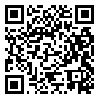Volume 12, Issue 3 (Aug & Sep 2018)
payavard 2018, 12(3): 230-238 |
Back to browse issues page
Download citation:
BibTeX | RIS | EndNote | Medlars | ProCite | Reference Manager | RefWorks
Send citation to:



BibTeX | RIS | EndNote | Medlars | ProCite | Reference Manager | RefWorks
Send citation to:
Safdari R, Hasan Nejadasl H, Rostam Niakan-Kalhori S, Nikmanesh B. Design and Evaluation of Mobile Based Self-Management System for Tuberculosis. payavard 2018; 12 (3) :230-238
URL: http://payavard.tums.ac.ir/article-1-6575-en.html
URL: http://payavard.tums.ac.ir/article-1-6575-en.html
1- Professor, Health Information Management Departement, School of Allied Medical Sciences, Tehran University of Medical Sciences, Tehran, Iran , rsafdari@tums.ac.ir
2- Master of Science in Medical Informatics, School of Allied Medical Sciences, Tehran University of Medical Sciences, Tehran, Iran
3- Associate Professor, Health Information Management Departement, School of Allied Medical Sciences, Tehran University of Medical Sciences, Tehran, Iran
4- Assistant Professor, Medical Laboratory Science Department, School of Allied Medical Sciences, Tehran University of Medical Sciences, Tehran, Iran
2- Master of Science in Medical Informatics, School of Allied Medical Sciences, Tehran University of Medical Sciences, Tehran, Iran
3- Associate Professor, Health Information Management Departement, School of Allied Medical Sciences, Tehran University of Medical Sciences, Tehran, Iran
4- Assistant Professor, Medical Laboratory Science Department, School of Allied Medical Sciences, Tehran University of Medical Sciences, Tehran, Iran
Abstract: (4705 Views)
Background and Aim: In recent years, tuberculosis is a major cause of illness and mortality due to infectious diseases. In fact, one of the reasons for increasing the incidence of tuberculosis is that it is often associated with HIV infection. The present study aimed to design and establish a mobile-based self-care system for controlling tuberculosis.
Materials and Methods: The data required in this research for evaluating the information and designing the application were collected in two main steps: first, the data required in this research for information needs assessment and application design were collected by searching in library resources. A questionnaire was applied by physicians to validate and determine the significance of these elements. Afterwards, based on information elements and the self-care, application was designed in the Android Studio environment.
Results: Information elements and functional capabilities required by the program were determined. Web-based services as a system interface, not only provided the communication between the patient and the care provider, also allowed for patient monitoring and disease control. Then evaluation of the performance and performance of the program was done by doctors and software experts. The findings showed user satisfaction with the application.
Conclusion: Monitoring of treatment electronically allows for less costly monitoring of the patient. In this study, we present a prototype of the relationship between self-care application and portal and its potential benefits, which will allow future studies to improve and add new capabilities.
Materials and Methods: The data required in this research for evaluating the information and designing the application were collected in two main steps: first, the data required in this research for information needs assessment and application design were collected by searching in library resources. A questionnaire was applied by physicians to validate and determine the significance of these elements. Afterwards, based on information elements and the self-care, application was designed in the Android Studio environment.
Results: Information elements and functional capabilities required by the program were determined. Web-based services as a system interface, not only provided the communication between the patient and the care provider, also allowed for patient monitoring and disease control. Then evaluation of the performance and performance of the program was done by doctors and software experts. The findings showed user satisfaction with the application.
Conclusion: Monitoring of treatment electronically allows for less costly monitoring of the patient. In this study, we present a prototype of the relationship between self-care application and portal and its potential benefits, which will allow future studies to improve and add new capabilities.
Send email to the article author
| Rights and permissions | |
 |
This work is licensed under a Creative Commons Attribution-NonCommercial 4.0 International License. |





